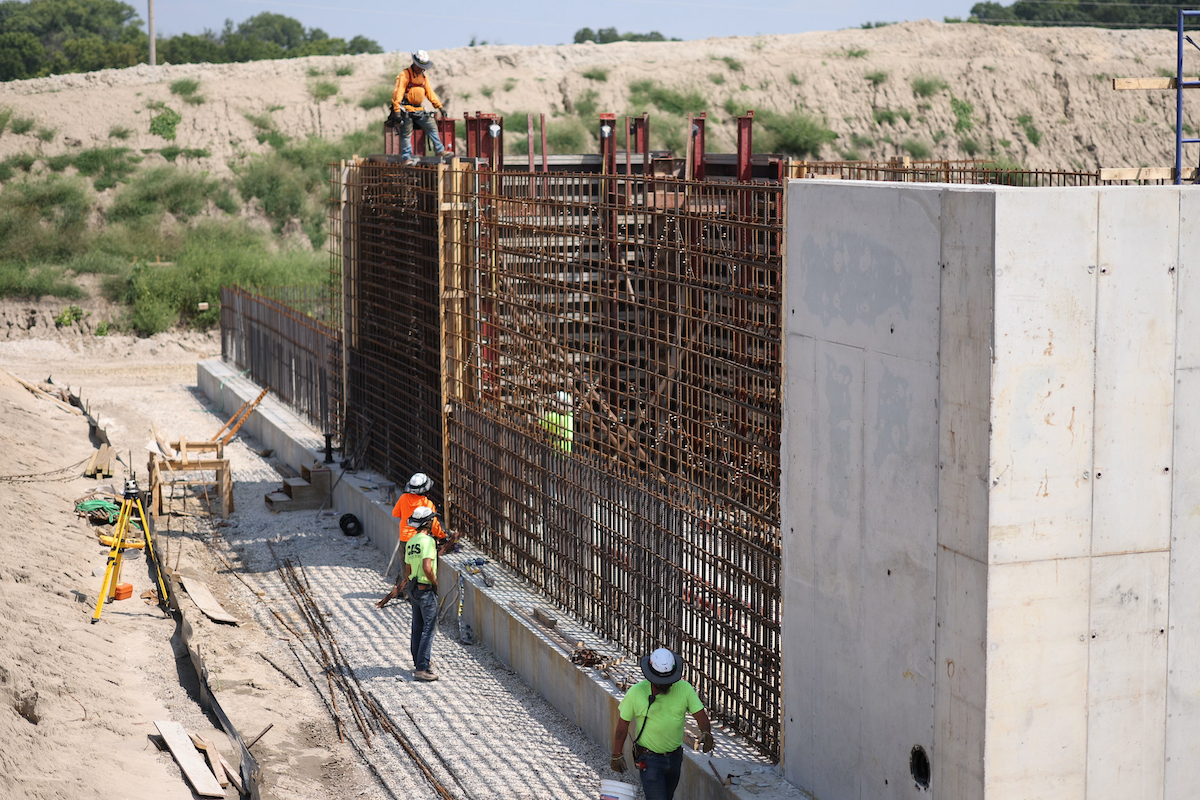However, through her work as coordinator of the Harper County Transition to Career Program and its partnership with local AEM member company Harper Industries, Hedlund recognizes it takes the right combination of engaged stakeholders, hard work and good fortune to build a strong workforce pipeline capable of sustaining itself over time.
“We started with – quite literally – nothing,” said Hedlund.
“And unfortunately, we’ve found ourselves in a scenario where the workforce available is quite limited and finding skilled workers has been a challenge for us for a long time,” said Luke Thornton, Vice President of Operations at Harper Industries, a manufacturer of bale beds, hydraulics and turf and landscape equipment based in Harper.
“In the past, we’ve tried partnering with our local schools in an effort to start creating a workforce pipeline, but the trouble was, every time we started making some progress and establishing some relationships, an instructor would end up leaving the community, and we’d have to start all over again,” Thornton added.

| Your local Gehl Co dealer |
|---|
| Star Equipment LTD |
Now, however, there’s reason for hope and optimism – and it’s largely due to the efforts of the Harper County Transition to Career Program and its successful ability to expose young people to careers in the skilled trades, develop their skills and provide access to meaningful work experiences.
“Ultimately, we’re trying to individualize their education, help them establish goals and set them up for post-secondary success,” Hedlund said.
And thanks in large part to a budding partnership with Harper Industries – one which led to the successful development of a welding program for students in Harper County – efforts to engage young people in Harper County regarding the value of building a career in the skilled trades have never been more successful.
“We’re very lucky to have some fantastic local instructors who are plugged into our community,” said Thornton. “Many are from the area originally, and a lot had different careers before moving into education because of their passion for education.”
“If there’s one thing that’s needed in our area and across our state, it’s welders,” said Hedlund. “Our schools just don’t have the money right now to invest in a welding program that would allow young people to gain certification through the American Welding Society. So, when I saw the grant, I applied for it and received it, and it allowed us to get started on buying the necessary equipment.”

| Your local Komatsu America Corp dealer |
|---|
| Road Machinery and Supplies Company |
Hedlund also pointed the workforce development efforts of AEM member company Vermeer Corporation, which she learned of by attending a conference a few years ago, as a blueprint of sorts for her in developing the Harper County Transition to Career Program. After contacting company officials in the weeks following the conference, Hedlund was able to travel to Vermeer’s headquarters in Pella, Iowa, and learn more about how Vermeer is tackling the skills gap and providing opportunities for professional development in its own community.
“I was then able to take what I learned, bring it back to Harper County, and scale it down for Harper Industries,” she added.
Hedlund also went to work trying to find students for the program, which eventually led to a collaborative partnership between three school districts in Harper County and Wichita, Kansas-based community college WSU Tech. Now, Harper County boasts a welding program with a morning class for 10 students, and plans are in place for it to grow into a two-year program with morning and afternoon class sessions later this year. In addition, efforts are under way to ensure an intern can start at Harper Industries this coming semester to provide additional work-based learning opportunities.
In addition to offering chances to gain real-world experience and obtain certifications necessary for securing full-time employment, the welding program offers students the chance to secure 10 hours of college credit for their first year, and as many as 10 for their second year.
“That’s a really good start for a college degree, if that’s the path they want to take,” Hedlund continued. “And without AEM, we could never have gotten started on this program.”

| Your local Gomaco dealer |
|---|
| Fabick CAT/MO |
| Road Machinery and Supplies Company |
According to Thornton, the successful launch of the welding program is largely due to a few key factors: the right timing, a little bit of luck, and a whole lot of hard work and collaboration.
“We wouldn't have had ability to do something like this on our own,” he said.
“The right people driving this makes all the difference,” said Thornton, who noted the students from several districts now have access to college-level courses because the welding program instructor has the proper certifications. “If we didn’t have the instructors we have now – along with the work being done by Britt – I’d be sitting here today still wondering how we could go about making something like this happen. So, having these talented driven people – and having them work together – has been key.”
The proof, however, is in the results. According to Thornton, a Harper Industries intern is poised to graduate from the program in May and seek full-time employment at the company shortly thereafter.
Manufacturing will continue to evolve with time, and the needs of the companies in the industry will change with it. As a result, it is critical for organizations to be able to connect with the workforce of tomorrow, inspire them to strongly consider a career as a skilled worker and – hopefully – develop them into qualified employees. It’s a tall task, and it’s one that requires people to come together to develop practical solutions for tackling the skills gap at the community level.

| Your local Trimble Construction Division dealer |
|---|
| SITECH Central LLC |
| SITECH Midway |
“The goal, overall, is to try to create a manufacturing pathway for students. The partnerships are so important for a smaller community, and we’re trying to work together to develop our workforce and help the students in the process,” said Thornton.
“Pulling together multiple manufacturers and multiple schools, trying to work together for the good of the community and the good of the students, I think that’s been the key,” he continued. “We had been failing, over and over again, because we didn’t have the right people. Now that we have the right people in the right roles, we’re really starting to make a difference.”



































































